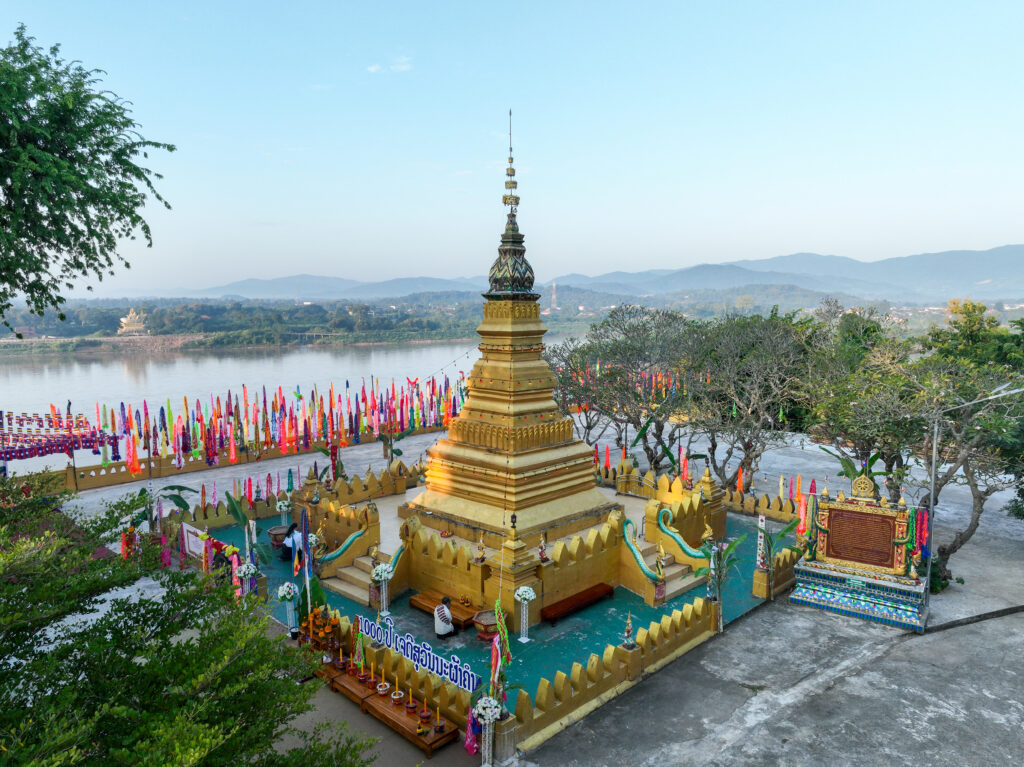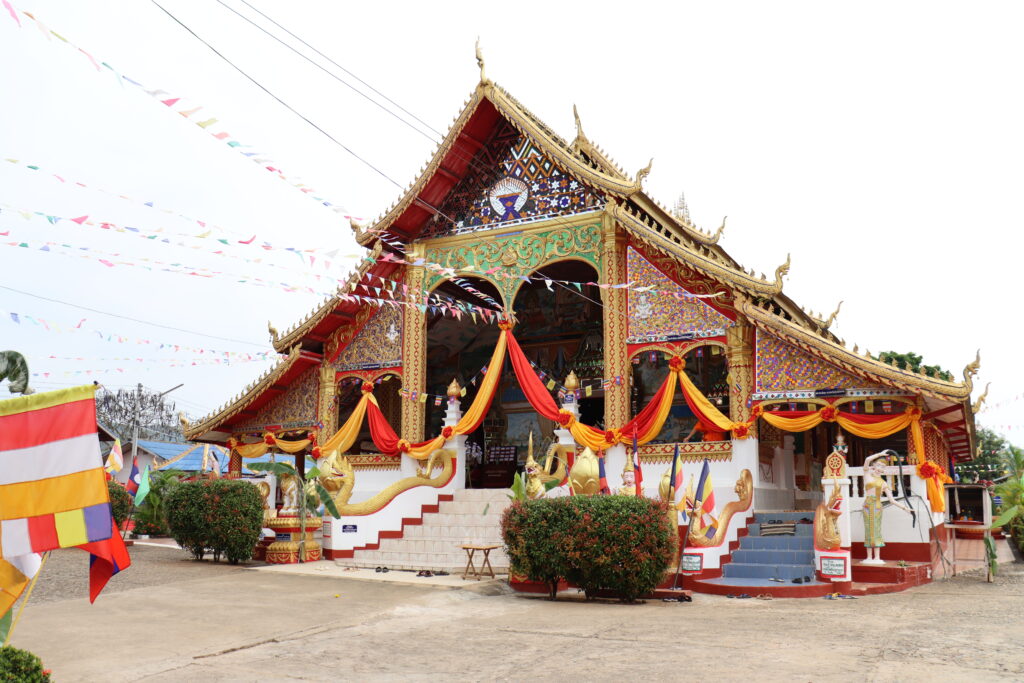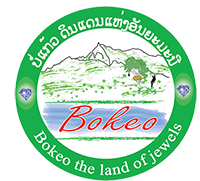Cultural Site
Souvanna Phakham Temple
– Information: On the stone inscription said that the former name” Vat Pha That Pak Hai “ is sacred all Buddhist people have respected. There was a legend of two brothers name “King Lava and Lavar were the sons of the King Lava Lavar wander along with his followers and hunters then got to an upland where was suitable for setting a trap catching for birds then the monks came across when the King Lava Lavar saw the faithfulness appeared so the monks were invited to be sprinkled water on the Mekong river bank after that the monks handled the wet robes to the king for drying then two brothers took a bath after bathing brothers picked up the monk’ robes while pulling the robes became a gold so they were excited by the incredibility then presented golden robe to the monks and followed the monks to camping site, making beds for the monks, preparing breakfast in the morning since then two brothers and followers listened for sermon till finishing they respected , as the monk patted the head three hairs stuck the hand from head gave them and the golden robe to the two brothers being told to make a monument for these things to be a place for all people to worship. Following monk’s instruction two brothers brought golden robes and silver to a smith to make golden, silver boats and golden, silver urns to store three hairs after that assigned followers to dig a hole on the hilltop where the trap was set as deep as the Mekong surface level to burry the golden, silver boats and golden, silver urns and built a stupa to cover that hole during the year 1022 stupa was named That Pak Hai then on their attendants settled in that area to to protect and look after the stupa since then the name That Pak Hai slightly changed to That Park Hai, Pha Kham (golden cliff) changed to Phar Kham (golden robe) according to an old people had recited that on the Buddhist day 15 kham (rising moon night) there was a shiny light on top of stupa all night. Right now, the place has been venerated along with the annual celebration of Buddhist believe especially on the Buddhist day 15 kham (rising day) in December on the same day of That Luang Stupa celebration in Vientiane capital. People will hold a festival to worship this stupa for three days enjoyably. Located in Tin That village, Huay Xai district, about 2.5 km south of the provincial capital.
– What to see and do: To venerate the stupa to get blessings, good luck for a trip during visit and enjoy view of Mekong river and Thailand.
– How to get There: all vehicles

Chomkhao Manilat Temple
Information: On that points we can see the landscape of Huay Xai urban and Chiang Khong (Thailand), thus it is easy accessible, this temple is old and sacred so most people have to respect, was built in 1880 it was researched that there are facilities provided enough for visitors with a plan to open to tourist. This temple is a highlight, a sacred altar of residents and tourists, recount that is the origin of the pillar on rock house model in the middle of the 15th century. Now has been burnt already, the inside of monastery still has images recounting the history of Buddha and Tao Hin ( turtle stone) to ask for good luck(as told that if one make the request and can raise Turtle stone means blessing that will be desirable), the door panels carved with a beautiful pictures of Sython Manola tales. Located in the major village Huay Xai neua, Huay Xai district, on a high mountain, or it can be said that it is a temple located in the center of the district.
– What to see and do: To see beautiful temple, study Buddhist matters, Lao tales and enjoy view of town and sunset.
– How to get There: by walking and all vehicle. Open every day free admission

BAN NAM CHANG – VILLAGE VIST
Ban Nam Chang is located 16 km from Houay Xai on the road to Luang Namtha. It is a Lanten village where many women still wear traditional clothing. They practice cotton spinning and weaving on small upright looms and then dye the cloth with natural indigo dye. The village has a small handicraft shop where you can purchase cloth, items they have made, and even a traditional outfit. If you book with an agency you can enjoy a local lunch and learn more about their traditional culture.







 Users Today : 41
Users Today : 41 Users Yesterday : 81
Users Yesterday : 81 This Month : 1494
This Month : 1494 This Year : 5752
This Year : 5752 Total Users : 21085
Total Users : 21085 Views Today : 144
Views Today : 144 Total views : 118694
Total views : 118694 Who's Online : 1
Who's Online : 1